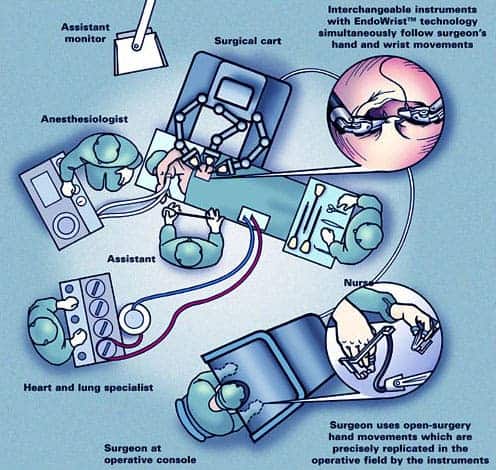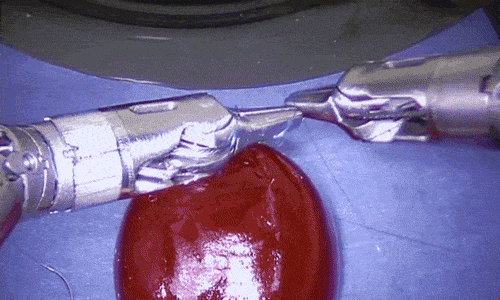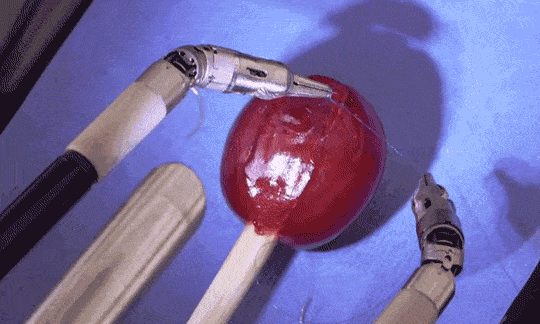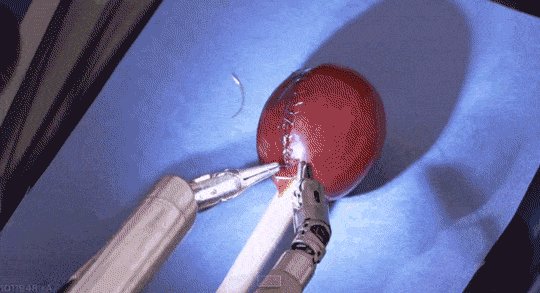With grace and steady robotic clippers, this high-end remote controlled surgical system was used to stitch a piece of skin back over the exposed flesh of a grape. Like a pro, the Da Vinci Surgical System – named after the famous renaissance genius who first inspired working robots – can be seen in this amazing video putting the final touch, tying a knot, then using its scissor-hand to cut the loose thread. Job done!
The Da Vinci Surgical System isn’t exactly new, though. It first received the FDA’s approval in 2000 and since then more than 2,100 of the systems have delivered to clinics and hospitals where they’re used mainly to perform hysterectomies and prostate removals.
It’s easy to praise it as wonder robot, but right now it’s just fancy (albeit powerful) surgical Swiss knife. The brain is still a human surgeon who remotely operates while seated comfortably at a console viewing a 3-D image of the surgical field. The surgeon’s fingers grasp the instrument controls below the display with wrists naturally positioned relative to his or her eyes. Then, the Da Vinci technology seamlessly translates the surgeon’s movements into precise, real-time movements of surgical instruments inside the patient.

If this technology has been around for 15 years now, what can expect to see in development today or a couple of years from now, for that matter? Well, automated surgical bots, for one. Ever opportunistic when it comes to innovative tech, Google has partnered with health giant Johnson & Johnson to develop surgical robots that use artificial intelligence.
Making them safe is another big challenge which needs to be addressed. As “robot surgeons” permeate hospitals more and more – and this seems quite inevitable – so do security concerns. For instance, University of Washington researchers hacked a next generation teleoperated surgical robot — one used only for research purposes — to test how easily a malicious attack could hijack remotely-controlled operations in the future.
Gifs via MIC







